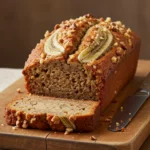Introduction
Spaghetti is a classic dish that has won hearts worldwide with its simplicity and deliciousness. It’s a staple in many households, delivering a comforting meal that’s easy to prepare and delightful to savor. The beauty of spaghetti lies in its versatility, and when paired with a homemade sauce, it becomes an irresistible culinary masterpiece. In this article, we’ll explore an easy recipe for spaghetti with a homemade sauce that anyone can whip up in no time. Whether you’re a seasoned chef or a kitchen novice, this guide will help you create a delectable meal that’s sure to impress.
Ingredients
To create this mouthwatering spaghetti with homemade sauce, you will need the following ingredients:
- 200g spaghetti
- 2 tbsp olive oil
- 1 onion, chopped
- 2 garlic cloves, minced
- 1 can (400g) crushed tomatoes
- 1 tsp dried basil
- 1 tsp dried oregano
- Salt & pepper to taste
- Fresh basil for garnish
These ingredients come together to form a sauce that is rich in flavor and perfectly complements the pasta. The use of fresh and dried herbs enhances the aroma and taste, making it a delightful experience for your taste buds.
Instructions
Creating this dish is as easy as it is satisfying. Follow these simple steps to prepare your spaghetti with easy homemade sauce:
- Cook Spaghetti:
Begin by cooking the spaghetti according to the package directions. Once cooked, drain and set it aside. This will ensure that your pasta is ready to be tossed with the sauce as soon as it’s done. - Sauté Onion:
In a pan, heat the olive oil over medium heat. Add the chopped onion and sauté for 3-4 minutes until it becomes soft and translucent. This step is crucial as it forms the aromatic base of your sauce. - Add Garlic:
Stir in the minced garlic and cook for another minute. Be cautious not to burn the garlic as it can turn bitter. The garlic will infuse the oil with a rich flavor, enhancing the overall taste of the sauce. - Simmer the Sauce:
Pour in the crushed tomatoes, followed by the dried basil, dried oregano, salt, and pepper. Stir well to combine. Allow the sauce to simmer for 10-15 minutes, stirring occasionally. This simmering process thickens the sauce and melds the flavors beautifully. - Combine Spaghetti and Sauce:
Toss the cooked spaghetti in the sauce until it is well-coated. This ensures that every strand of pasta absorbs the flavors of the sauce, making each bite a flavorful delight. - Garnish and Serve:
Serve the spaghetti hot, garnished with fresh basil. The fresh basil not only adds a pop of color but also a fresh, aromatic note that complements the dish perfectly.
Nutrition Facts
Understanding the nutritional content of your meal is important for maintaining a balanced diet. Here’s the nutrition breakdown per serving of this spaghetti with homemade sauce:
- Calories: 350
- Protein: 10g
- Carbs: 60g
- Fat: 10g
- Fiber: 5g
This dish provides a balanced mix of carbohydrates, proteins, and fats, making it a wholesome meal option. The fiber content aids digestion, while the protein helps in muscle building and repair.
How to Serve
Serving your spaghetti with homemade sauce can be as creative as you like, transforming a simple meal into an unforgettable dining experience. Here are several detailed suggestions to elevate your spaghetti presentation and flavor profile, ensuring every bite is a delight.
Cheese Topping
One of the simplest yet most effective ways to enhance your spaghetti is by adding a generous topping of freshly grated cheese. Parmesan is a classic choice, known for its rich, nutty flavor that complements the acidity of tomato-based sauces beautifully. For those who enjoy a sharper taste, Pecorino Romano is an excellent alternative, offering a saltiness that can elevate the entire dish. Consider using a microplane or fine grater to achieve a light, fluffy texture that will melt into your pasta, creating a luscious coating. For an adventurous twist, try adding crumbled goat cheese or a sprinkle of feta for a tangy contrast, especially if your sauce includes roasted vegetables or olives.
Side Salad
Balance is key in any meal, and a fresh green salad can provide a delightful contrast to the rich pasta. Opt for a mixed green salad featuring ingredients like arugula, spinach, and romaine for a variety of textures. To enhance the flavors, toss in some cherry tomatoes, cucumber slices, and red onion. Dress the salad with a light vinaigrette made from olive oil, balsamic vinegar, a hint of honey, and a sprinkle of salt and pepper. The acidity from the dressing will cleanse the palate and complement the savory notes of your spaghetti sauce. For added crunch and flavor, consider incorporating nuts such as walnuts or pine nuts, or toppings like avocado or shaved carrots.
Garlic Bread
No spaghetti meal is complete without a side of garlic bread. This irresistible accompaniment not only adds a delightful crunch but also serves a practical purpose—perfect for soaking up any leftover sauce on your plate! To prepare, slice a baguette or a loaf of Italian bread in half lengthwise. Mix softened butter with minced garlic, finely chopped parsley, and a touch of salt. Spread this mixture generously over the bread halves and bake in a preheated oven until golden and crispy. For a gourmet touch, try adding mozzarella cheese on top before baking for a cheesy garlic bread that will tantalize your taste buds. Alternatively, you can grill the bread for an added smoky flavor.
Wine Pairing
To truly elevate your spaghetti dining experience, consider the perfect wine pairing. A glass of red wine can bring out the flavors of your dish beautifully. Chianti, with its bright acidity and notes of cherry, pairs exceptionally well with tomato-based sauces, enhancing the meal without overpowering it. If you prefer something a bit smoother, Merlot offers a soft, velvety option with flavors of plum and chocolate that harmonize well with hearty meat sauces. For a lighter touch, a crisp Pinot Grigio can be an excellent choice, especially when serving lighter sauces, such as olive oil or garlic-based preparations. Always serve the wine slightly chilled, and consider offering a small selection for guests to choose from, enhancing the overall dining experience.
Additional Presentation Tips
Beyond the basic components, consider the overall presentation of your dish. Use a large, shallow bowl to serve the spaghetti, allowing the noodles to nest comfortably in the sauce. For a pop of color, garnish with fresh basil leaves or a sprinkle of red pepper flakes for those who enjoy a little heat. Additionally, serving the meal with colorful utensils or vibrant table settings can enhance the visual appeal, making the dining experience feel more special.
By incorporating these elements into your spaghetti service, you’ll not only create a meal that’s delicious but also one that is visually appealing and memorable for your guests. Enjoy the art of serving as much as the art of cooking, and your dining experience will surely be one to savor!
Additional Tips
To take your spaghetti with homemade sauce to the next level, consider these additional tips that will enhance both flavor and nutrition, ensuring a delightful culinary experience.
Quality Ingredients
The foundation of any great dish lies in the quality of its ingredients. For your spaghetti sauce, opt for high-quality extra virgin olive oil. The richness and depth of flavor from a good olive oil can elevate the entire dish, providing a fruity, peppery note that complements the acidity of the tomatoes.
In addition to olive oil, fresh garlic is a must. Freshly minced garlic releases oils and aromas that dried garlic simply cannot match. Look for firm, plump bulbs with tight skins, and be sure to mince or slice them just before cooking to maximize their pungency. If you want to add a bit of sweetness, consider roasting the garlic beforehand, which mellows its flavor and adds a rich caramelization to your sauce.
Herb Variations
While traditional spaghetti sauce often relies on basil and oregano, don’t hesitate to experiment with a variety of herbs to create a unique flavor profile. Fresh thyme can add a subtle earthiness, while rosemary introduces a robust, pine-like aroma that pairs beautifully with tomato-based sauces.
You can also incorporate fresh parsley or a hint of sage for an aromatic lift. If you’re feeling adventurous, consider adding a pinch of crushed red pepper flakes for a touch of heat or even a splash of balsamic vinegar to enhance the overall complexity of the sauce. Remember, when using fresh herbs, add them towards the end of cooking to preserve their vibrant flavors.
Add Vegetables
Incorporating a variety of vegetables not only enhances the flavor of your sauce but also boosts its nutritional value. Bell peppers, for instance, can add a sweet crunch, while mushrooms contribute a savory umami depth. Zucchini, spinach, or even grated carrots can be included for additional texture and vitamins.
To incorporate these vegetables effectively, sauté them along with the garlic at the beginning of the sauce preparation. This method allows them to soften and release their flavors, creating a more layered and complex sauce. Additionally, consider adding a handful of cherry tomatoes for a burst of freshness or some chopped kale for added nutrients.
Protein Boost
For those looking to transform their spaghetti into a heartier meal, adding a protein source can be an excellent option. Cooked chicken or shrimp can be tossed into the sauce just before serving, allowing them to absorb some of the sauce’s flavors while adding substantial protein.
If you prefer plant-based options, consider incorporating lentils or chickpeas, which not only provide protein but also fiber, making the dish more filling. For an Italian twist, you could also use Italian sausage, whether pork or a meat alternative, which can add a savory richness to your sauce. Simply cook the sausage first and crumble it into the sauce for a delicious addition.
Finish with Flair
Finally, don’t forget the finishing touches that can elevate your dish even further. A sprinkle of freshly grated Parmesan cheese adds a creamy, salty element that complements the acidity of the tomatoes beautifully. For a pop of color, consider garnishing your dish with fresh basil or parsley just before serving.
A drizzle of high-quality olive oil or a splash of balsamic reduction on top of the finished dish can also enhance the presentation and flavor. If you’re feeling indulgent, a few toasted pine nuts or walnuts can add a delightful crunch and a nutty flavor that contrasts nicely with the softness of the pasta.
By implementing these tips, you can transform a simple spaghetti dish with homemade sauce into a gourmet experience that delights the palate and impresses your guests. Embrace creativity in the kitchen, and enjoy the process of crafting a meal that reflects your personal taste and style!
FAQs
Q: Can I use fresh tomatoes instead of canned?
A: Yes, you can use fresh tomatoes. Simply blanch, peel, and crush them before adding to the sauce.
Q: How can I make the sauce thicker?
A: To thicken the sauce, let it simmer longer or add a tablespoon of tomato paste.
Q: Can I store leftover sauce?
A: Absolutely! Store any leftover sauce in an airtight container in the refrigerator for up to 3 days.
Q: Is this recipe gluten-free?
A: The recipe is not gluten-free due to the spaghetti. However, you can easily substitute with gluten-free pasta.
Q: Can I freeze the sauce?
A: Yes, you can freeze the sauce for up to 2 months. Thaw it overnight in the refrigerator before reheating.
Conclusion
Spaghetti with easy homemade sauce is a classic dish that brings comfort and joy to any dining table. With its simple preparation and delightful flavors, it’s a recipe that deserves a place in your culinary repertoire. By following the steps outlined in this article, you’ll be able to create a delicious meal that’s not only satisfying but also nourishing. So gather your ingredients, put on your chef’s hat, and embark on a flavorful journey with this timeless spaghetti recipe. Enjoy every bite!
The homemade sauce, made from fresh tomatoes, garlic, olive oil, and a hint of basil or oregano, adds a vibrant and aromatic flavor that’s far superior to store-bought alternatives. The key to the sauce is simmering it low and slow, allowing the ingredients to meld together for a rich, comforting taste. You can also customize it by adding a pinch of red pepper flakes for some heat or a touch of balsamic vinegar for added depth. The beauty of this dish lies in its versatility—you can pair it with a variety of pasta shapes, add a protein like meatballs or grilled chicken, or top it with freshly grated Parmesan cheese for that perfect finishing touch. Whether you’re cooking for one or for a crowd, spaghetti with homemade sauce is sure to be a crowd-pleaser, bringing a little taste of Italy to your kitchen.
- 200g spaghetti
- 2 tbsp olive oil
- 1 onion, chopped
- 2 garlic cloves, minced
- 1 can (400g) crushed tomatoes
- 1 tsp dried basil
- 1 tsp dried oregano
- Salt & pepper to taste
- Fresh basil for garnish

Spaghetti with Easy Homemade Sauce Recipe
Ingredients
- 200g spaghetti
- 2 tbsp olive oil
- 1 onion, chopped
- 2 garlic cloves, minced
- 1 can (400g) crushed tomatoes
- 1 tsp dried basil
- 1 tsp dried oregano
- Salt & pepper to taste
- Fresh basil for garnish
Instructions
- Cook Spaghetti:
Begin by cooking the spaghetti according to the package directions. Once cooked, drain and set it aside. This will ensure that your pasta is ready to be tossed with the sauce as soon as it’s done. - Sauté Onion:
In a pan, heat the olive oil over medium heat. Add the chopped onion and sauté for 3-4 minutes until it becomes soft and translucent. This step is crucial as it forms the aromatic base of your sauce. - Add Garlic:
Stir in the minced garlic and cook for another minute. Be cautious not to burn the garlic as it can turn bitter. The garlic will infuse the oil with a rich flavor, enhancing the overall taste of the sauce. - Simmer the Sauce:
Pour in the crushed tomatoes, followed by the dried basil, dried oregano, salt, and pepper. Stir well to combine. Allow the sauce to simmer for 10-15 minutes, stirring occasionally. This simmering process thickens the sauce and melds the flavors beautifully. - Combine Spaghetti and Sauce:
Toss the cooked spaghetti in the sauce until it is well-coated. This ensures that every strand of pasta absorbs the flavors of the sauce, making each bite a flavorful delight. - Garnish and Serve:
Serve the spaghetti hot, garnished with fresh basil. The fresh basil not only adds a pop of color but also a fresh, aromatic note that complements the dish perfectly.
Nutrition
- Serving Size: One Normal Portion
- Calories: 350
- Fat: 10g
- Carbohydrates: 60g
- Fiber: 5g
- Protein: 10g





